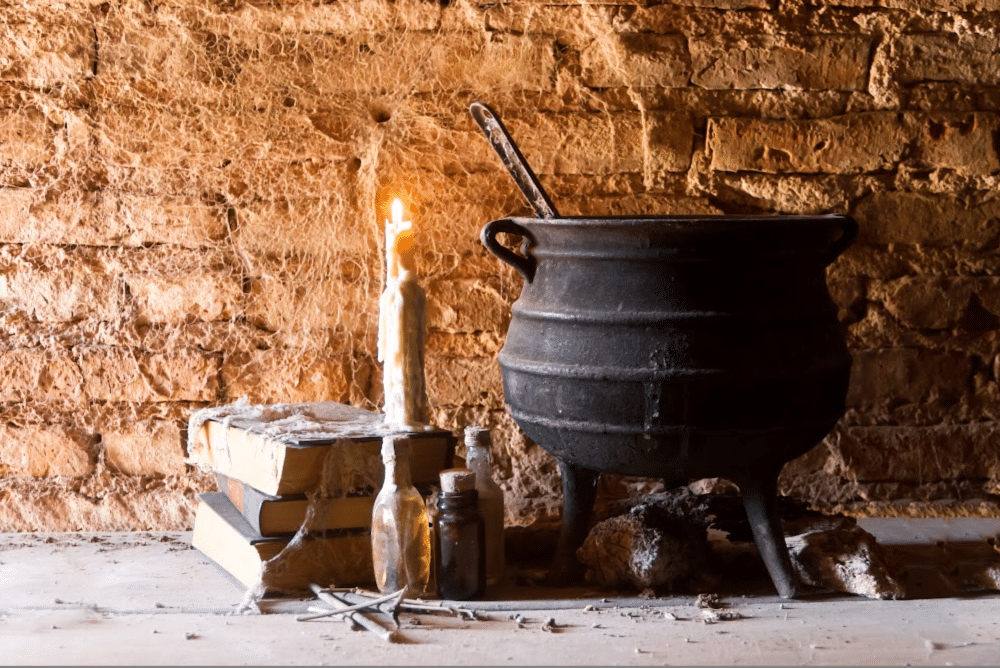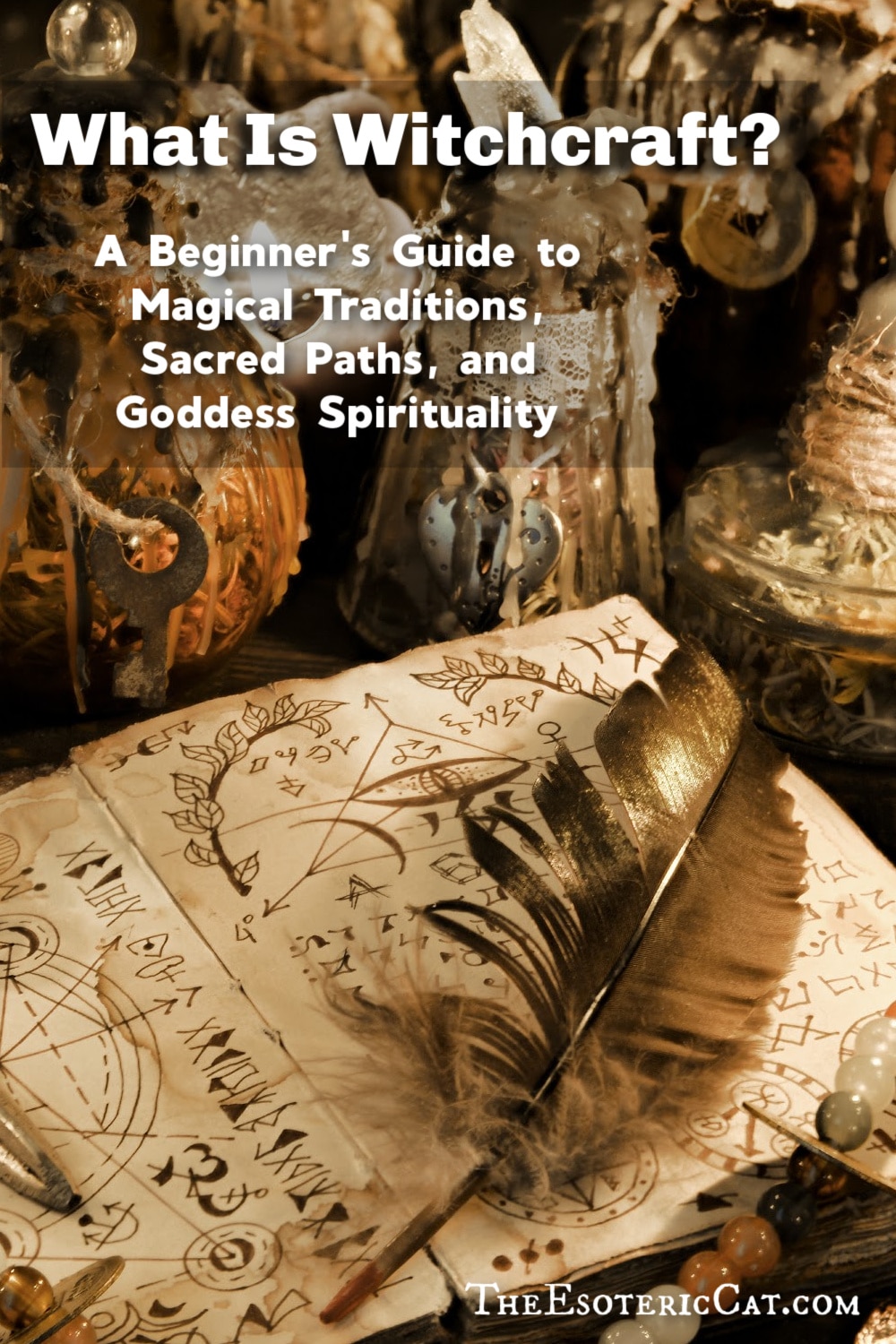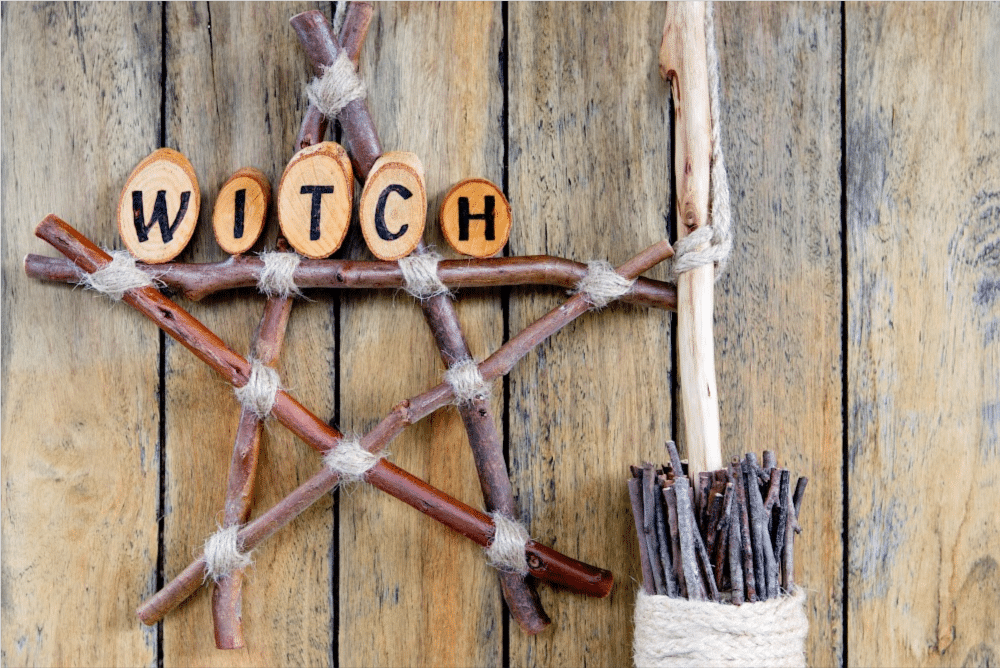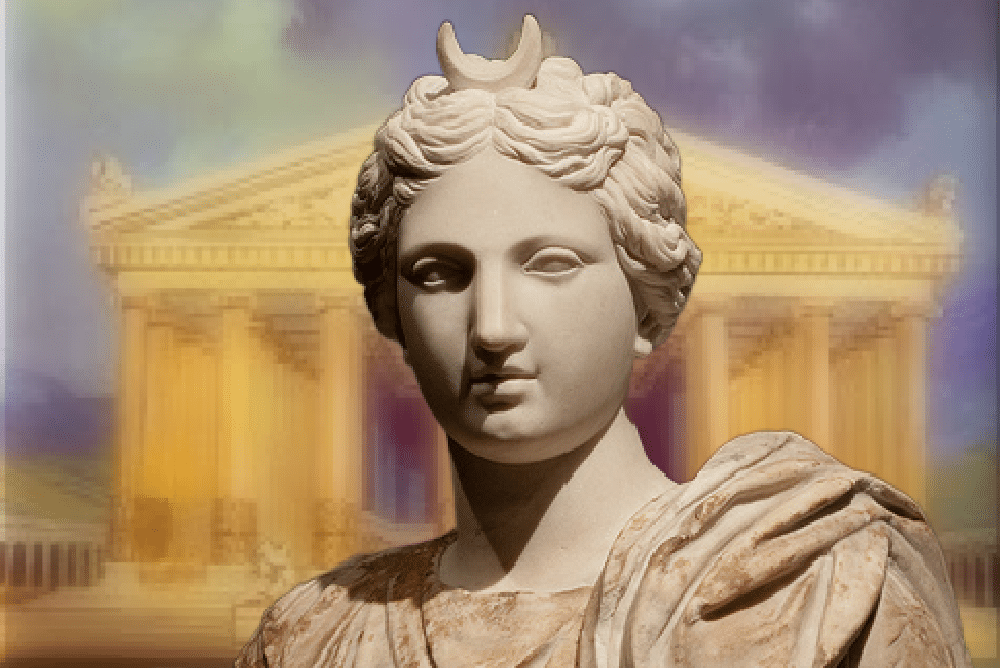Witchcraft is an ancient and evolving spiritual practice that has been woven into the fabric of human history for centuries. It predates the three major monotheistic religions by thousands of years, with the earliest known spiritual traditions being goddess-based religions in ancient Mesopotamia. These early civilizations honored powerful feminine deities, seeing divinity in the cycles of nature, fertility, and the mysteries of life and death. Witchcraft is not a single tradition but a vast collection of beliefs, rituals, and magical practices that span cultures and generations. For some, witchcraft is a deeply rooted ancestral tradition passed down through family lines, while for others, it is a personal journey of discovery, shaped by intuition and experience.
Unlike mainstream religions, witchcraft is often non-dogmatic and highly adaptable, allowing practitioners to forge their own paths. Some witches follow structured traditions with established rituals, while others create an eclectic practice based on their connection to nature, spirits, or deities. At its core, witchcraft is about harnessing energy, working with natural forces, and aligning with the cycles of the universe to bring about change.
This guide is not a compendium of every single practice but rather an introduction to and overview of some of the most popular traditions. Witchcraft is vast, and The Esoteric Cat will explore many of these traditions in greater depth in future posts.
What Is Witchcraft?
Witchcraft is more than just spells, potions, and rituals. It is a way of understanding and interacting with the world. At its core, witchcraft is about power, transformation, and connection to the self, to nature, and to the unseen forces that shape reality. Throughout history, witches have been healers, rebels, visionaries, and spiritual leaders, often existing on the fringes of society where their knowledge and power could not be controlled by dominant institutions.
Witchcraft as Power and Reclamation
For many, practicing witchcraft is a way to reconnect with ancient wisdom and reclaim personal agency. Throughout history, those accused of witchcraft were often individuals, especially women, who possessed knowledge of healing, divination, and spiritual practices that operated outside of institutional control. Their understanding of natural remedies, intuitive guidance, and personal power made them both revered and feared. These traditions, once suppressed, are now being revived by those seeking a deeper connection to their own spiritual autonomy.
Even today, embracing witchcraft can be an act of defiance against societal expectations. It is about trusting your own intuition, working with unseen forces, and reclaiming the magic that has been stripped from everyday life by modern rationalism, capitalistic culture, and religious control.
Witchcraft as Survival and Resistance
Witchcraft is not just mystical; it has always been practical. Many forms of traditional witchcraft evolved as a means of survival in harsh environments. Folk magic, for example, arose from necessity: charms for protection, remedies for illness, and spells to bring good fortune. In times when people had little control over their lives due to poverty, oppression, or war, magic became a way to exert influence over fate.
For marginalized communities, witchcraft has often been a means of resistance. From enslaved people using rootwork and hoodoo to protect themselves, to women accused of witchcraft during times of social upheaval, the craft has been a refuge for those who needed power in a world that sought to strip it away.
Witchcraft as a Spiritual Path
While witchcraft is not a religion in itself, it is a deeply spiritual practice for many. Some witches follow structured spiritual traditions, such as Wicca, Druidry, or Stregheria, while others practice independently, drawing inspiration from multiple traditions. Many witches work with nature, spirits, deities, ancestors, and cosmic energies, using rituals and spells as a means of aligning with these forces.
At its heart, witchcraft is about direct experience. There are no intermediaries, no need for permission or dogma. It is about forging a personal connection with the unseen, trusting in your own power, and walking a path that is uniquely yours.
Different Types of Witchcraft: Exploring Sacred Traditions and Practices
Witchcraft is as diverse as the people who practice it. There is no singular way to be a witch, no universal doctrine, and no one-size-fits-all tradition. Across cultures and centuries, countless paths have emerged, each shaped by history, geography, and the unique spiritual needs of its practitioners.
This guide provides an introduction to some of the most well-known and widely practiced traditions of witchcraft. However, it is by no means an exhaustive list. Many witches blend multiple practices, and new traditions continue to evolve. Future posts on The Esoteric Cat will explore each of these paths in greater depth, offering a deeper understanding of their origins, philosophies, and modern applications.
🌿 Traditional and Folk Witchcraft
Traditional witchcraft encompasses practices that have been passed down through generations, often rooted in regional folklore and ancestral wisdom. These paths emphasize the connection between magic, nature, and practical survival.
Hereditary Witchcraft
Hereditary witchcraft refers to magical traditions passed down within families. Practitioners inherit spells, rituals, and knowledge from their ancestors, often through oral traditions or family grimoires. These witches may feel a deep spiritual connection to their lineage, drawing power from the wisdom and practices of their forebears.
While hereditary witches often maintain a sense of familial identity within their craft, not all who come from a line of witches choose to practice, and not all who practice hereditary witchcraft have direct ancestral ties. The path is as much about preserving magical wisdom as it is about forging one’s personal relationship with tradition.
Folk Magic and Cunning Folk Traditions
Folk magic is a practical, no-nonsense approach to witchcraft deeply embedded in rural communities and everyday life. It includes practices like Appalachian Granny Magic, Italian Stregheria, and European cunning folk traditions. These witches rely on charms, talismans, and herbal remedies for protection, healing, and good fortune.
Unlike ceremonial or initiatory paths, folk magic is accessible and often passed down informally within families or communities. Many folk practitioners do not identify as witches, instead viewing their craft as a natural part of their heritage or spiritual practice.
Hedge Witchcraft
Hedge witches act as spiritual intermediaries, journeying between the physical and spirit worlds. This practice, often associated with trance work, astral travel, and spirit communication, draws its name from the metaphorical “hedge” that separates mundane reality from the unseen realms.
Many hedge witches practice divination, dreamwork, and ancestral communication, using their skills to seek guidance and insight. They often work alone, developing highly personal methods of connecting with spirits, nature, and the liminal spaces between worlds.
Green Witchcraft
Green witches are deeply connected to the natural world, using plants, herbs, and the cycles of the earth in their magic. Their practices often include herbalism, gardening, and wildcrafting, working with the energy of the land for healing and spellwork.
Beyond simply working with herbs, green witches develop an intuitive relationship with nature, often engaging in seasonal rituals, eco-conscious magic, and sustainable living. Many believe that tending the land and honoring its spirit is an integral part of their craft.
🕯️ Ceremonial and Structured Witchcraft
Some traditions of witchcraft are more structured, incorporating formal initiations, rituals, and esoteric teachings. These paths often involve working within established magical systems and following specific practices.
Wicca – Gardnerian and Alexandrian
Gardnerian and Alexandrian Wicca are two of the most well-known forms of modern witchcraft. Founded by Gerald Gardner and Alex Sanders, respectively, these initiatory traditions emphasize ritual structure, coven-based practice, and the worship of a Goddess and God.
Both traditions require initiation, with teachings passed down through structured lineages. Ritual tools, sacred symbols, and secrecy play significant roles in these paths, making them more formalized than eclectic or folk-based practices.
Please note that not all witches are Wiccan, as is a common misconception. Witchcraft as a practice predates Wicca by centuries, encompassing a wide range of traditions that exist independently of Wiccan beliefs and structures.
Thelema and Chaos Magic
Thelema, founded by Aleister Crowley, blends ceremonial magic, astrology, and Egyptian mysticism. It is guided by the phrase “Do what thou wilt shall be the whole of the Law,” emphasizing personal freedom, self-discovery, and ritual work.
Chaos magic, on the other hand, is a highly flexible and experimental approach to magic. Practitioners use belief as a tool, shaping their magical system based on what works for them rather than adhering to rigid structures. It is often associated with sigil magic, psychological techniques, and modern adaptations of ancient practices.
Hermetic Witchcraft
Hermetic Witchcraft is influenced by Hermeticism, an esoteric philosophy that seeks to understand the divine through knowledge, alchemy, and sacred geometry. It is deeply connected to the principles of “As above, so below,” exploring the interplay between the microcosm and macrocosm.
Practitioners of Hermetic Witchcraft may incorporate elements of astrology, numerology, and Kabbalistic teachings into their work, using these systems to deepen their understanding of the universe and their place within it.
🌙 Eclectic and Modern Witchcraft
Modern witchcraft has evolved to include highly individualized paths that blend multiple traditions, allowing practitioners to craft a practice that resonates with their unique spiritual needs.
Eclectic Witchcraft
Eclectic witches draw from various traditions, integrating different magical and spiritual practices into their craft. Rather than following a single path, they create a personalized approach that reflects their experiences, beliefs, and intuitive guidance.
This path is highly flexible, allowing witches to experiment with different techniques, pantheons, and rituals. While some criticize eclecticism for lacking structure, many find that it allows for deep personal growth and spiritual authenticity.
Kitchen Witchcraft
Kitchen witches incorporate magic into daily life, using cooking, herbs, and domestic rituals to infuse the home with enchantment. Their spells often involve food magic, hearth-centered rituals, and crafting protective charms from everyday household items.
This path is deeply tied to intention. Every action, from stirring a pot to baking bread, can be an act of magic when performed with mindfulness and purpose. Kitchen witches often see their homes as sacred spaces where magic and mundane life seamlessly intertwine.
Cosmic Witchcraft
Cosmic witches align their practice with celestial bodies, moon phases, planetary influences, and astrological correspondences. They use planetary energies in spellwork, track the movements of the stars, and incorporate lunar cycles into their rituals.
This path often involves deep study of astrology, incorporating knowledge of zodiac signs, planetary transits, and cosmic events to enhance magical workings and spiritual insight.
Techno Witchcraft
Techno-witches use modern technology as a tool for magic, integrating digital sigils, online energy work, and electronic methods of manifestation. They may create digital altars, work with algorithms to amplify spellwork, and explore how the internet functions as an energetic web.
While unconventional, this path highlights the evolving nature of witchcraft, proving that magic can adapt to the technological advancements of the modern world.
🌸 Feminist and Goddess-Centered Witchcraft
These paths celebrate divine femininity, empowerment, and spiritual sovereignty. They honor the sacred feminine by drawing upon the wisdom, strength, and transformative energy of the Goddess in her many forms.
Often referred to as Goddess Wisdom, Women’s Spirituality, or Feminist Witchcraft, this path preserves sacred teachings from goddess-centered traditions while reclaiming the spiritual authority historically denied to women and marginalized groups. Practitioners honor deities such as Hekate, Isis, Brigid, and the Morrigan through ritual, devotion, and deep spiritual study. This practice fosters personal transformation, strengthens intuition, and deepens the connection to the divine feminine.
Dianic Witchcraft
Dianic Witchcraft is a deeply feminist tradition that focuses on Goddess worship, the sacredness of womanhood, and honoring the natural cycles of life. Rooted in the belief that the divine feminine holds transformative power, this path celebrates the strength, wisdom, and spiritual authority of women. Some Dianic groups maintain women born women-only spaces, creating sacred circles for healing and empowerment, while others welcome practitioners of all gender identities who feel called to the Goddess.
This path fosters both personal and collective empowerment, encouraging practitioners to embrace their inner strength and reclaim their spiritual sovereignty. Rituals often incorporate storytelling, sacred dance, and ritual theater, transforming spiritual practice into a deeply embodied experience. Dianic witches work with the cycles of the moon, seasonal festivals, and goddess-centered rites, using their craft as a tool for healing, self-discovery, and resistance against patriarchal oppression.
Reclaiming Tradition
A blend of witchcraft, eco-feminism, and social activism, the Reclaiming Tradition was founded by Starhawk in the 1970s. It integrates ritual with community-based work, focusing on spiritual growth and political engagement.
Reclaiming witches often incorporate activism into their magical practice, using rituals to empower social movements and support justice-oriented causes. This tradition blends elements of feminist spirituality, earth-based ritual work, and collective empowerment, making it a dynamic and evolving path within modern witchcraft.
Hekatean Witchcraft
Hekatean witches devote themselves to Hekate, the goddess of magic, crossroads, and the underworld. Their practices often include working with spirits, necromancy, and deep ritual work dedicated to Hekate’s wisdom and guidance.

Finding Your Path in Witchcraft: Choosing the Right Tradition for You
Witchcraft is a deeply personal and evolving practice, offering endless possibilities for self-discovery and spiritual growth. Unlike organized religions with rigid doctrines, witchcraft allows each practitioner to forge their own path, drawing from traditions, intuition, and lived experiences. There is no singular way to be a witch; only the way that resonates most with you.
For many seekers, the vast number of traditions, practices, and magical paths can feel overwhelming. Some are drawn to structured initiatory traditions, while others prefer an eclectic approach that blends multiple influences. The key is to explore, experiment, and trust your instincts as you uncover what aligns with your spirit and personal beliefs.
Questions to Ask Yourself
Before settling on a specific tradition, take time to reflect on what you seek from your practice. Here are some guiding questions to help you navigate your journey:
- Are you drawn to a specific culture, mythology, or historical tradition?
- Do you prefer a structured, ritual-based practice, or do you thrive in a more intuitive and fluid approach?
- Are you interested in working with deities, spirits, or ancestors?
- Do you feel a stronger connection to nature, celestial influences, or folk magic?
- Would you rather practice alone or within a group or coven setting?
- Does activism, feminism, or social justice play a role in your spiritual beliefs?
Your answers can help guide you toward traditions that align with your personal values and spiritual aspirations.
Exploring Different Paths
If you’re uncertain where to begin, allow yourself to explore and experience different traditions. Read books, attend workshops, listen to practitioners from various backgrounds, and experiment with practices that call to you. You may find that you resonate strongly with one path, or you may blend elements from multiple traditions to create something uniquely your own.
At its core, witchcraft is a living, breathing, transformative practice that grows and evolves with you. It is not bound by dogma or rigid conformity but instead encourages personal discovery and connection with the divine in ways that feel authentic to you. It is a practice of love, empowerment, and exploration—not blind obedience or servitude.
The Role of Intuition in Your Practice
While research and study are valuable tools, intuition is a fundamental part of witchcraft. There is no book, teacher, or tradition that can dictate what is right for you; only you can determine what resonates with your spirit. Pay attention to what naturally calls to you, whether it’s a particular deity, divination method, or spellwork practice.
Many witches find that their path unfolds organically over time. What speaks to you today may shift as you grow, and that is completely normal. Witchcraft is not about following a fixed route but rather embracing a lifelong journey of learning and spiritual evolution.
Embracing Change and Growth
Your journey in witchcraft is ever-changing. As you gain experience, your understanding of magic, energy, and spirituality will expand. Give yourself permission to explore freely and evolve without pressure to conform to any single path.
There is no right or wrong way to practice witchcraft; only the way that feels right for you. Each experience adds depth to your craft, and every lesson shapes your connection to magic. Trust in your ability to walk this path, knowing that it will unfold in its own time.
Explore The Esoteric Cat to find insights on various traditions, techniques, and philosophies to help you deepen your craft and confidence. New content is added regularly, so check back often for fresh perspectives and guidance on your magical journey.

Common Myths About Witchcraft: Debunking Misconceptions
Despite the growing acceptance of witchcraft, many misconceptions persist due to outdated beliefs, misinformation, and pop culture portrayals. These myths can create confusion and stigma, preventing people from truly understanding the craft. Let’s debunk five of the most common myths about witchcraft.
🚫All Witches Are Wiccan
Here’s the truth: Not all witches are Wiccan. Wicca is a relatively new religion, created by Gerald Gardner in the 1950s, and while it incorporates elements of witchcraft, it is just one path among many. Witchcraft itself has existed for centuries, long before Wicca even existed, and it spans countless cultures and traditions. The assumption that all witches are Wiccan is not only wrong, it’s a dismissal of the diversity and depth of witchcraft. Whether it’s folk magic, hedgecraft, or a personal eclectic practice, witches are not a monolith. So stop assuming, it’s disrespectful and harmful.
🚫Witchcraft Is Evil or Satanic
Witchcraft gets demonized because of centuries of persecution and misunderstanding. But let me make this clear: witchcraft is not evil, and most witches don’t even believe in the Christian concept of Satan. Witchcraft is rooted in nature, empowerment, and healing. It is a path of reclaiming our power, not worshiping some devil. Witches work with energy, herbs, and intention to manifest real change in their lives. We’re not here to summon demons or bend people to our will. It’s about self-growth, not fear tactics.
🚫You Need Expensive Tools to Practice Witchcraft
Here’s the deal: You don’t need fancy tools or overpriced crystals to practice witchcraft. Sure, tools can be nice, but witchcraft has always been about intention, not the stuff you buy. Traditional witches used what they had, kitchen herbs, candles, and a lot of intuition. Stop thinking you need to spend a ton of money to be a ‘real’ witch. Magic happens with or without the ‘stuff’. It’s about what you put into it.
🚫Witches Must Be Born With Magical Powers
You don’t need to be born into a magical family to be a witch. The idea that witches are born with ‘special powers’ is nonsense. We all have innate abilities, and witchcraft is about tapping into them. You don’t need supernatural powers to be a witch, just the willingness to learn, practice, and grow. Anyone can tap into their intuition and energy. Witchcraft is about learning how to awaken that power you already possess within yourself.
🚫Witchcraft Is About Controlling Others
Witchcraft is not about controlling people or doing harm. That’s a toxic myth perpetuated by fear-mongering. Most witches live by personal codes of ethics, such as the Wiccan Rede, which teaches that harm is not part of the practice. Witchcraft is about personal empowerment, healing, and protection, not manipulating others or trying to control their lives.

Witchcraft is not just a practice; it is a path of self-discovery, empowerment, and deep connection to the energies that shape our world. Whether you are drawn to structured traditions, folk magic, or an eclectic blend of practices, your journey is uniquely your own. The most important thing is to trust yourself, embrace curiosity, and allow your practice to evolve naturally.
No two witches walk the same path, and that is the beauty of the craft. You have the freedom to explore, to change, and to redefine what witchcraft means to you. There is no finish line, no single destination; only the endless unfolding of wisdom, experience, and personal growth.
Take the time to listen to your intuition. Explore the various magical practices that resonate with your spirit. Be open to discovering new techniques and traditions, they will guide you to a deeper understanding of the craft. Witchcraft is a living, breathing, transformative practice that adapts to your growth, and the possibilities are endless as you continue your journey.
Explore The Esoteric Cat to find insights on various traditions, techniques, and philosophies to help you deepen your craft and confidence. We will keep adding more posts to help guide you, so check back often for fresh perspectives and more resources as you continue to grow in your practice.
Whether you decide to connect with nature, work with the moon, or explore divination, remember that witchcraft is about personal empowerment. Trust yourself to walk the path that is right for you. This journey is yours to define.
Your journey is just beginning, and the possibilities are infinite.
✨When it is time to learn, the student will find a teacher, Welcome.✨
We’re here to guide you every step of the way.



